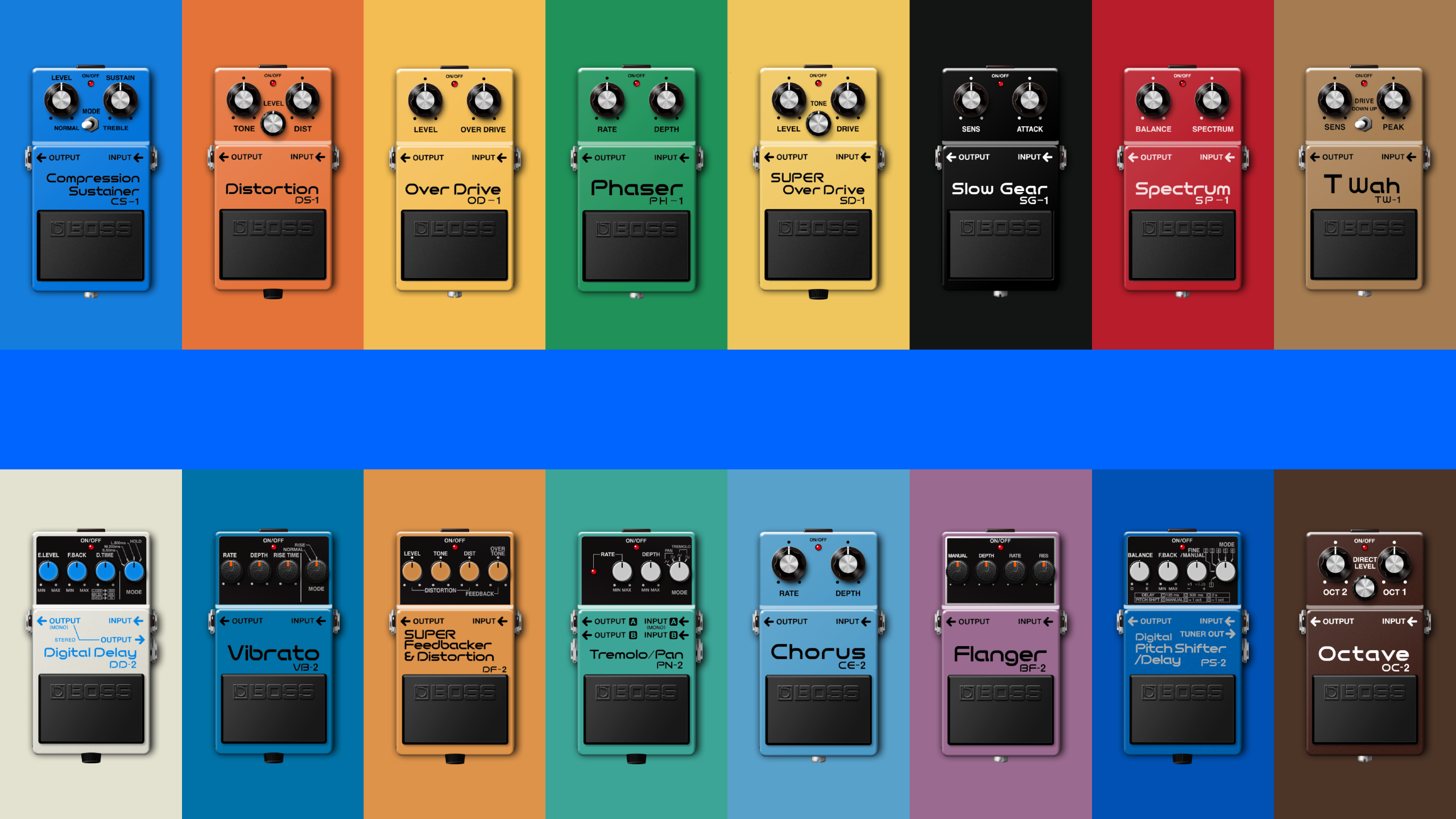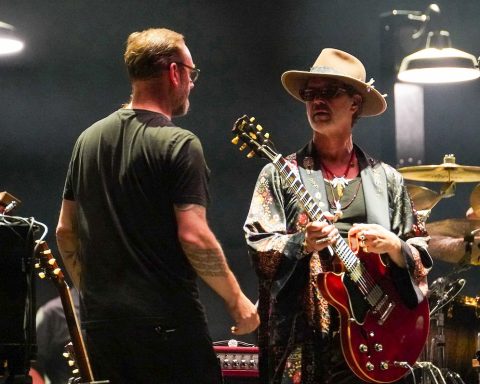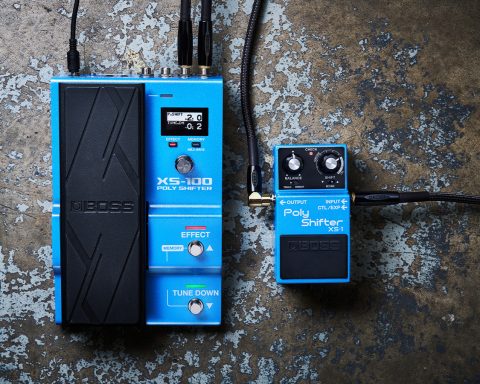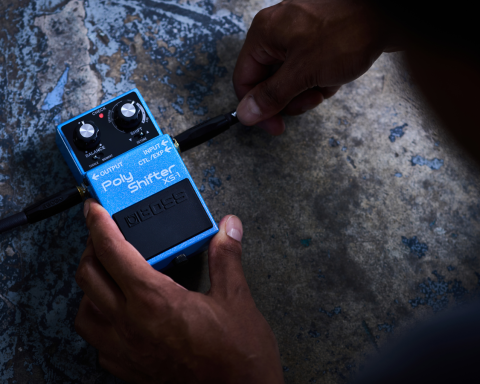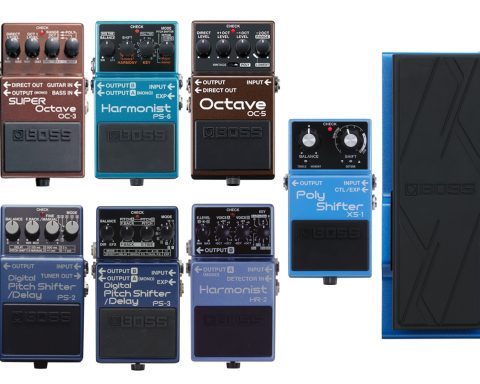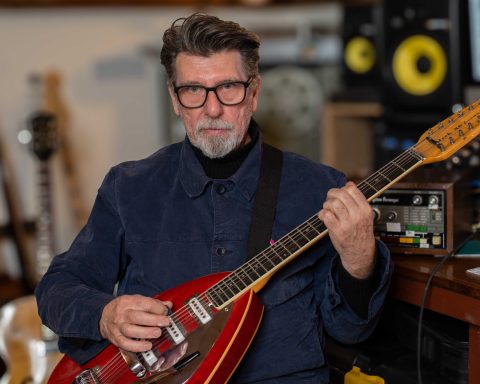There’s something undeniably magical about a BOSS compact pedal. With their iconic colors and rugged, stomp-ready design, these little boxes helped shape the sound of modern music. Despite being decades old, original units are still on the boards of working musicians today. Why? Because each one brings its own charm and personality. BOSS compact pedals are timeless tools of expression that keep players coming back, generation after generation.
Now, many of those game-changing sounds are conveniently available with the PX-1 Plugout FX compact pedal and BOSS Effects Pedals plug-in suite. Ready to drop into your pedalboard and DAW, this ever-expanding collection of recreations from the historic BOSS lineup is bound to elevate your music to new creative heights.
Whether it’s the amp-like punch of an OD-1 Over Drive, the evocative bloom of the elusive SG-1 Slow Gear, or the “vintage digital” echoes of a DD-2 Digital Delay, every exquisitely detailed algorithm captures what made the original so special.
Want to know why players keep coming back to these time-tested circuits? Read on and discover how you can weave some of this iconic sonic magic into your music.
OD-1 Over Drive
Appearing in 1977, the OD-1 set benchmarks in guitar tone and popularized the term ‘overdrive’ as a category of effects. Offering warm, natural-sounding drive, it was a standout alternative to the countless fuzz pedals of the era.
The OD-1’s original asymmetric clipping circuit generated that signature sound, rich in even-order harmonics with the familiar response of a pushed tube amp. Featuring a low-impedance input, players could explore shades of warm, touch-sensitive overdrive using the guitar volume control.
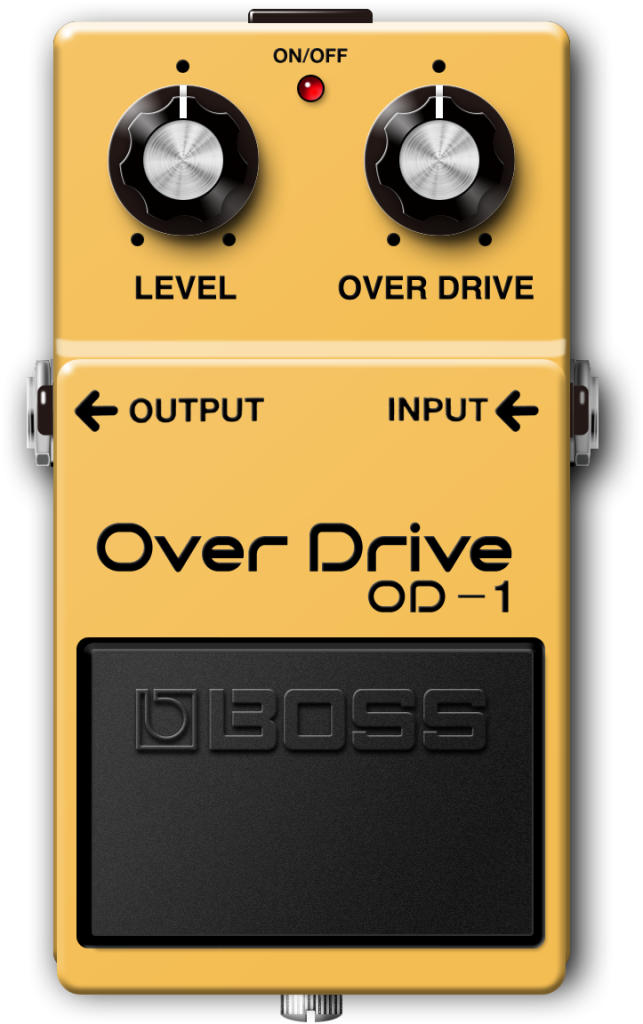
Still highly revered, the OD-1 is as relevant and sought after today as ever. Guitarists love its subtle mid bump, which adds presence without harshness. Meanwhile, its tight low-end keeps everything focused and articulate.
Position it in your signal chain as a core drive or use it to goose your amp into harmonic bliss. This timeless classic reminds us that, sometimes, the future of your sound starts by plugging into the past.
PH-1 Phaser
Warm and understated yet full of character, the PH-1 Phaser arrived in 1977 as part of the debut ‘traffic light’ trio of compact pedals, along with the OD-1 Over Drive and SP-1 Spectrum.
A genuine four-stage phaser, the PH-1 was notable for its clarity and depth—a legacy that holds strong today. You’ll hear it in the slow-blooming swirl at ultra-low speeds and the rounded low end that brings a natural weight to chords and lead lines.
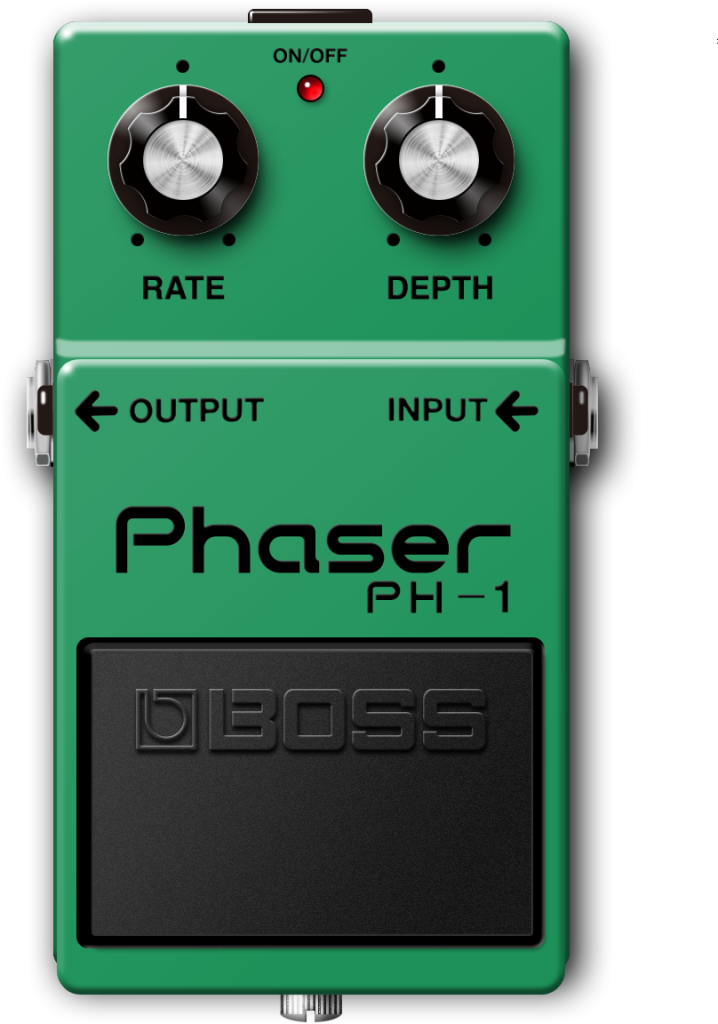
The PH-1 melds chewy, velvety resonance and luscious fluidity to deliver one of stompbox history’s most significant, yet often overlooked, phaser pedals. Push the Depth and you’re into jet territory—perfect for energizing distortion tones or adding animated movement to arpeggios and rhythmic stabs.
The FET-based circuit introduced a subtle gain pulse, giving the modulation a living, breathing feel. And that’s where the magic happens. The PH-1 doesn’t just sweep—it ebbs and flows, lending color and motion, whatever the style.
SP-1 Spectrum
An elusive legend from 1977, the SP-1 Spectrum is one of the rarest BOSS compacts ever made. Originally derived from the Roland SR-120 amp’s unique tone-shaping circuit, this deceptively simple two-knob tool offered diverse sonic possibilities.
The Spectrum control dials in a frequency band between 500 Hz and 5 kHz, while the Balance knob blends wet and dry signals in a way that feels organic—reshaping your tone rather than merely boosting it.
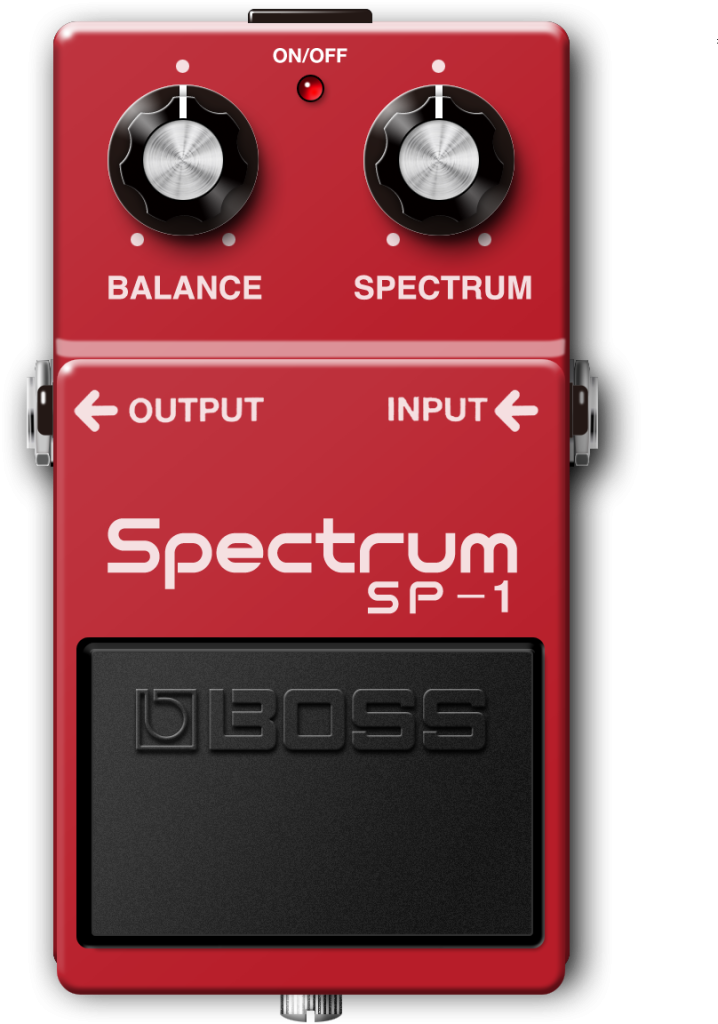
Ideal for mimicking cocked-wah sounds or giving your tone the nudge it needs to leap out of a mix, the SP-1’s real strength lies in how it revoices your instrument.
Bassists once leaned on it to carve through a performance with authority, but guitarists discovered its finesse in adding color—especially before gain-based effects. This hidden gem is a must-hear, no matter what instrument you’re playing.
DS-1 Distortion
Since its debut in 1978, the DS-1 has been the secret weapon behind countless anthemic riffs and soaring solos. This best-selling BOSS compact delivers biting, full-bodied distortion and smooth sustain, with the kind of attack and definition players find instantly addictive.
Whether you’re pushing heavy rhythms or sculpting a lead tone that sings, its dynamic response and unmistakable edge stay true.
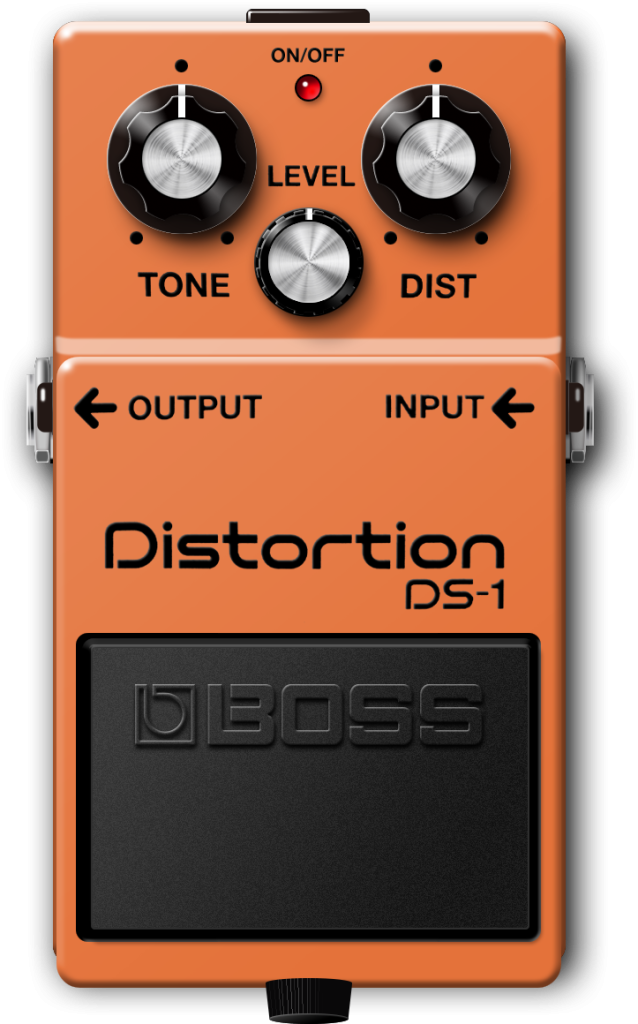
With the twist of a knob, you can dial in anything from mid-gain crunch to aggressive saturation. The distinctive tone circuit lets you shape lows and highs with a surprising degree of control.
Pull back your guitar’s volume, and the DS-1 gracefully backs off, revealing chiming clean tones without getting murky. Punky grit or stadium rock swagger, this is the raw, responsive distortion that gets your ideas moving fast.
CS-1 Compression Sustainer
Serve a fat slice of vintage compression with the first BOSS Compression Sustainer, the CS-1 from 1978. Built around an optical design uncommon in pedals, this photocoupler-based circuit delivered a tasteful ‘squashed’ tone with a fast attack, complementing funk chops and country picking.
Thanks to its low-noise optical design, the CS-1 is ideal for keeping rhythm parts tight, clean, and percussive.
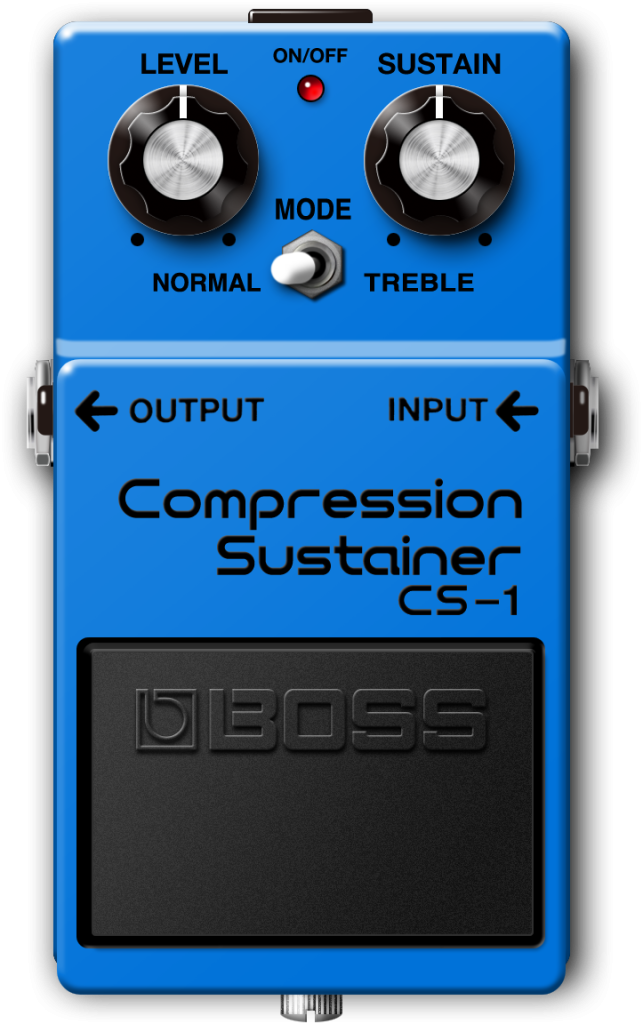
The switchable Treble mode adds a strident shimmer, pushing your tone forward with edge and clarity. At the same time, the Sustain knob opens up a wide range of sounds: gentle transient control, thick rubbery compression, and everything between.
Crank it and you’ll feel that endless bloom on every note. This is compression with warmth, waiting to give your tone a loving squeeze.
TW-1 T Wah
Released in 1978, the TW-1 T Wah delivered the dynamic, touch-responsive filtering that defined a generation of fusion and funk. The analog circuit features a photocoupler (like the CS-1), yielding a slightly slower, more fluid response for a distinctive playing feel.
This unique design naturally smooths off harsh highs, giving a warm, musical tone that flatters guitar, bass, and keys alike. With Up and Down Drive modes on tap, you can flip the direction of the filter sweep to suit your phrasing, crafting subtle swells or dramatic frequency shifts at will.
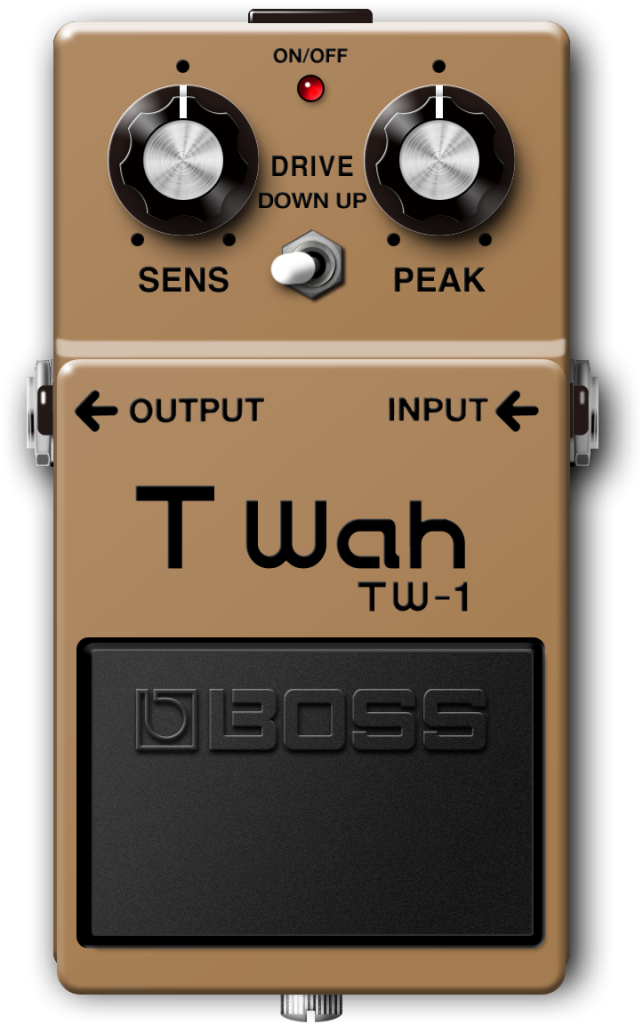
Whether you’re laying into the strings or backing off for nuance, the TW-1 reacts to your touch with a characterful voice. The Sens control tailors the effect’s sensitivity to your picking strength, while the Peak knob fine-tunes its tonal depth.
Use it for righteous rhythm work or lavish leads—this trusty vintage auto-wah does all the fancy footwork for you.
SG-1 Slow Gear
With its elusive production run and cult-like status, the SG-1 Slow Gear has long been one of the rarest and most sought-after BOSS effects pedals.
Originally made between 1979 and 1982, this unique circuit—derived from 1979’s NF-1 Noise Gate—gives a reverse twist on standard gating by creating a natural volume swell. Think violin-style attack without ever touching your volume knob. Ambient washes or elegant lead work, the SG-1 transforms dynamics and phrasing.
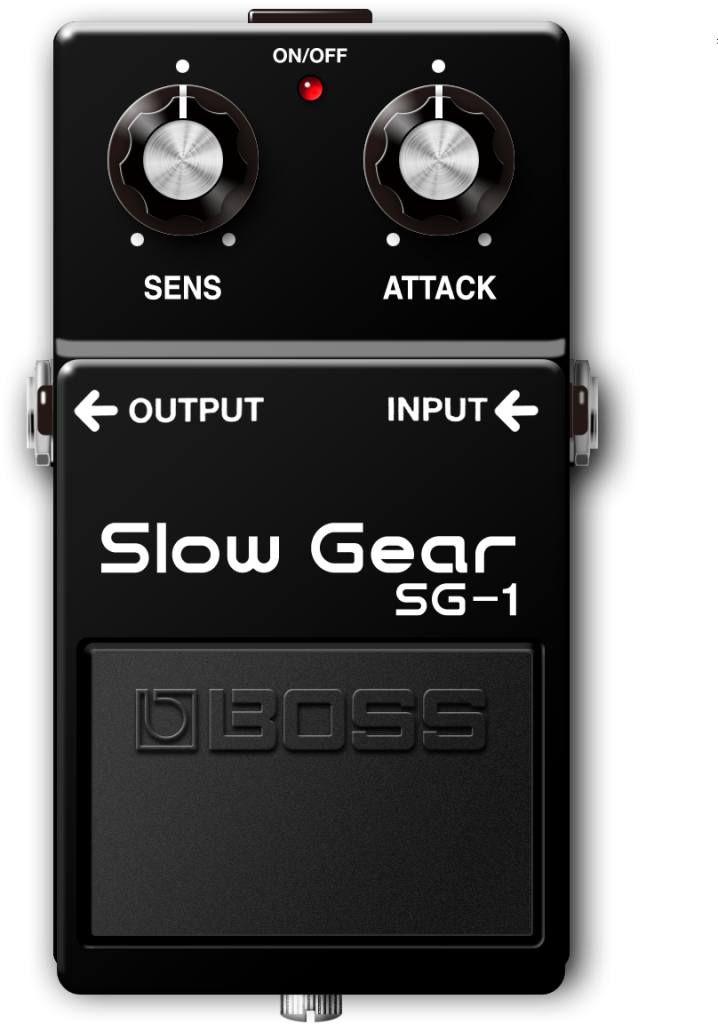
Released in the early years of compact pedal innovation, the SG-1 remains one of the most forward-thinking and inventive BOSS creations. Designed to fade in notes automatically, it delivers everything from classic swell sounds to dreamy, atmospheric textures—all without needing a volume pedal.
With its responsive, slow-attack sound, the SG-1 carved out a distinct niche in the world of guitar effects. One thing it won’t do is fade away—the beloved Slow Gear is here to stay.
SD-1 SUPER OverDrive
Released in 1981 and still in production today, the SD-1 is BOSS’s most enduring overdrive pedal. Built on the tonal foundation of the legendary OD-1, it offers the same warm push and smooth asymmetric clipping, from subtle growl to fierce roar.
The addition of a Tone knob and enhanced low-end response gives it notable flexibility, letting you shape everything from edge-of-breakup sparkle to creamy sustain. This timeless overdrive is great for dialing in bite, warmth, and midrange that sits just right in a band mix.
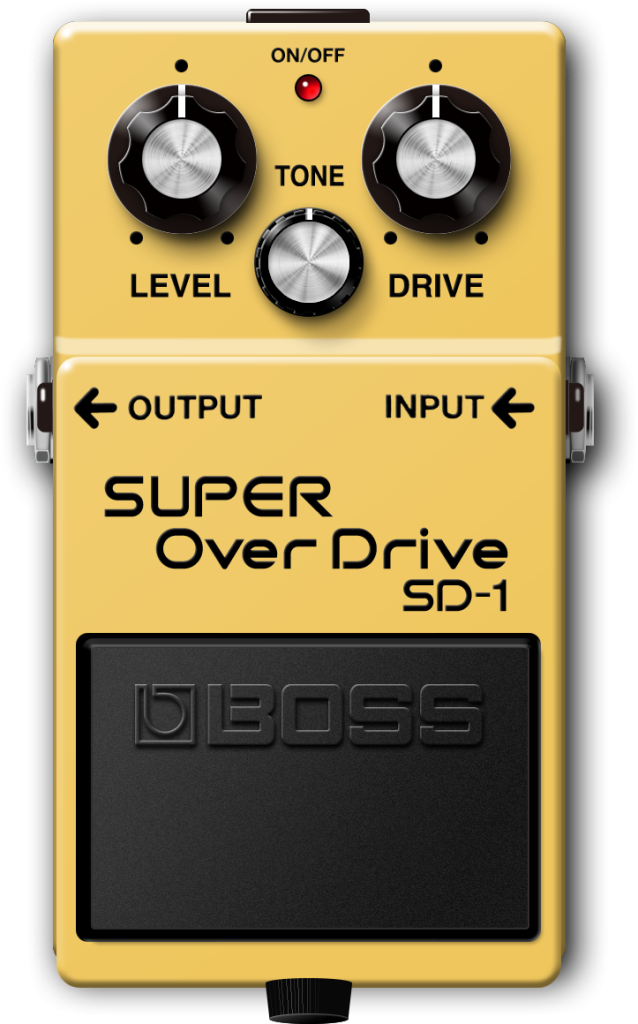
The beauty of the SD-1 lies in how it responds; dig in and it sings, back off and it breathes. Stack it with other pedals, add presence to a clean rhythm tone, or tighten up a high-gain amp—the adaptable SD-1 delivers feel and focus with a touch of vintage magic.
Guaranteed to help you nail that perfect tone, it’s a pedalboard workhorse with unbridled versatility.
CE-2 Chorus
Released in 1979, the CE-2 Chorus was the first BOSS chorus pedal designed for guitar. Building on the success of 1976’s CE-1 Chorus Ensemble—the world’s first chorus pedal—it brought analog shimmer to the compact series.
Unlike the CE-1’s all-in-one Intensity knob, the CE-2 offered independent Depth and Rate controls, delivering chorus that was both flexible and clear. At gentler settings, it imparted a sense of warmth and articulation, lifting the tone just enough to cut through.
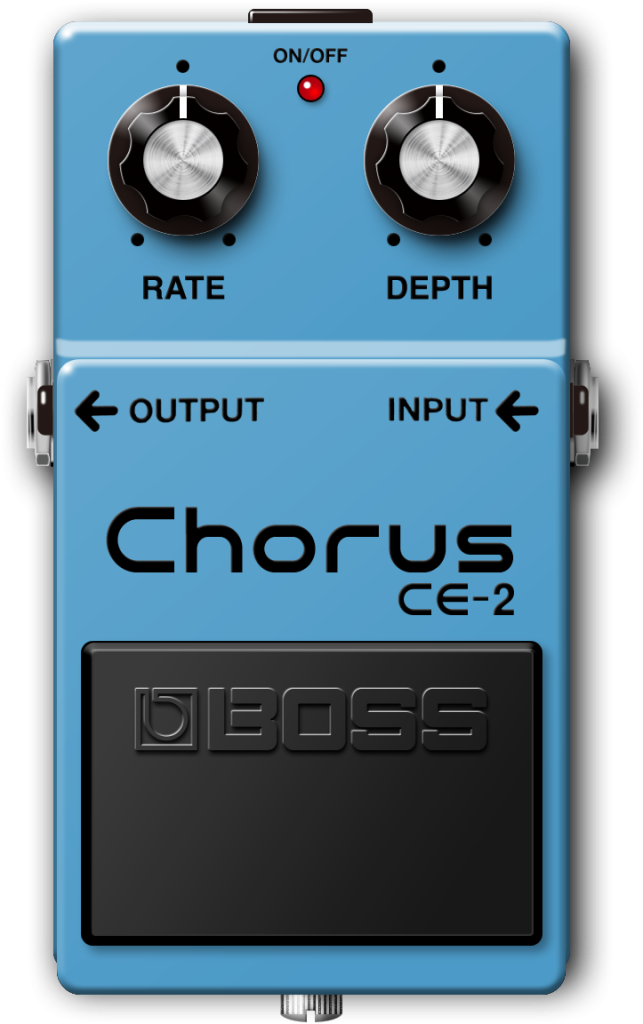
At its heart lies a 1024-stage Bucket Brigade Device (BBD) chip, which delivers a colorful chorus sound that’s deep, lush, and full of life. The effect thickens your tone by doubling the original signal with a modulated pitch, resulting in a vibrant modulation that adapts to many styles.
Superseded by the stereo-equipped CE-3 Chorus in 1982, though available until 1991, this classic stompbox has appeared on countless recordings. To this day, it remains one of the most revered analog choruses ever made.
BF-2 Flanger
Appearing in 1981 and remaining a catalog fixture for over two decades, the BOSS BF-2 Flanger earned a reputation as one of its era’s most versatile modulation pedals.
Designed around a single 512-stage BBD chip, it covered everything from iridescent chorus-like sounds to that unmistakable jet-plane woosh. Four broad-ranging controls—Manual, Depth, Rate, and Resonance—allowed players to fine-tune the effect’s delay time, sweep width, modulation speed, and feedback, opening the door to an impressive range of tones.
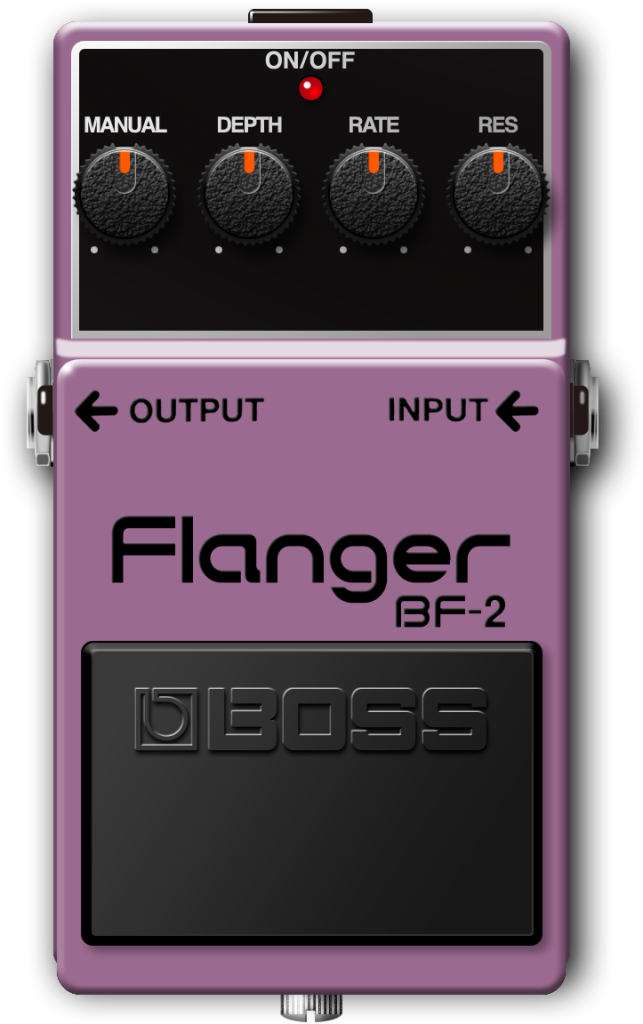
With gentler settings, the BF-2 could mimic the sway of a tremolo or add soft, metallic color to chords. Push the Resonance and Rate, and it tipped into intense sweeps. Its smart analog design ensured warmth and musicality, whatever the setting.
Superseding the “big box” BF-1 Flanger that debuted in 1977, the BF-2 is a testament to BOSS engineers’ knack for refining circuitry into timeless tone machines.
OC-2 Octave
Debuting in 1982, the OC-2 quickly established itself as a trailblazer in octave effects. Unlike earlier octave pedals that reduced the waveform to a square and stripped away character, the OC-2 pioneered waveform inversion—delivering octaves that preserved the instrument’s true tone.
With independent level controls for your dry signal, one octave down, and two octaves down, the OC-2 lets you shape everything from tone thickening to colossal, synth-like sub-bass—particularly treasured by bassists needing seismic low-end power.
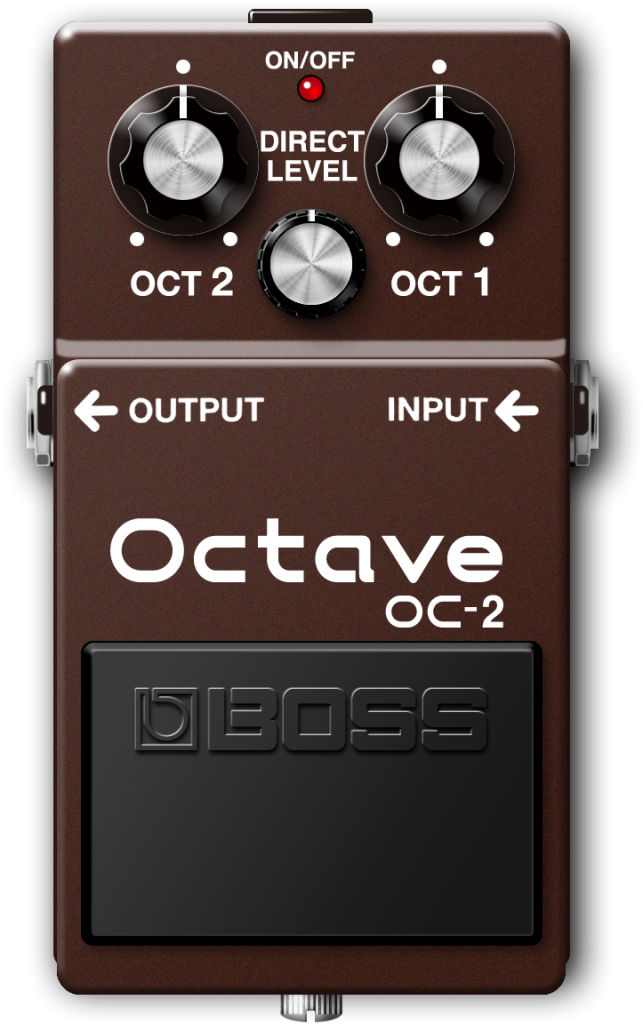
The OC-2 excels at fattening guitar riffs, simulating bass accompaniment, or building rich, organ-like layers from a single instrument. Indeed, it is still coveted today for its inimitable organic sound and response.
Over its 23-year production run, the OC-2 became a staple on professional pedalboards, living up to BOSS’s early ad campaign promise: “At last, the first and final real thing.” Decades later, the OC-2 is still considered a benchmark for octave effects.
VB-2 Vibrato
Available between 1982 and 1986, the VB-2 Vibrato has long been one of the most sought-after products in the BOSS back catalog. Unlike most pedal-based vibrato effects, which tended to appear as a byproduct of chorusing, the VB-2 was dedicated solely to this modulation type. The result? Flawless vibrato that set the standard.
Built around a 1024-stage BBD, it presented gorgeous pitch modulation that, depending on the Rate and Depth settings, ranged from gentle hand-style vibrato to deep, fast wobble. The Rise Time control allows players to adjust how quickly the effect reaches full depth, lending the sound a natural, expressive swell.
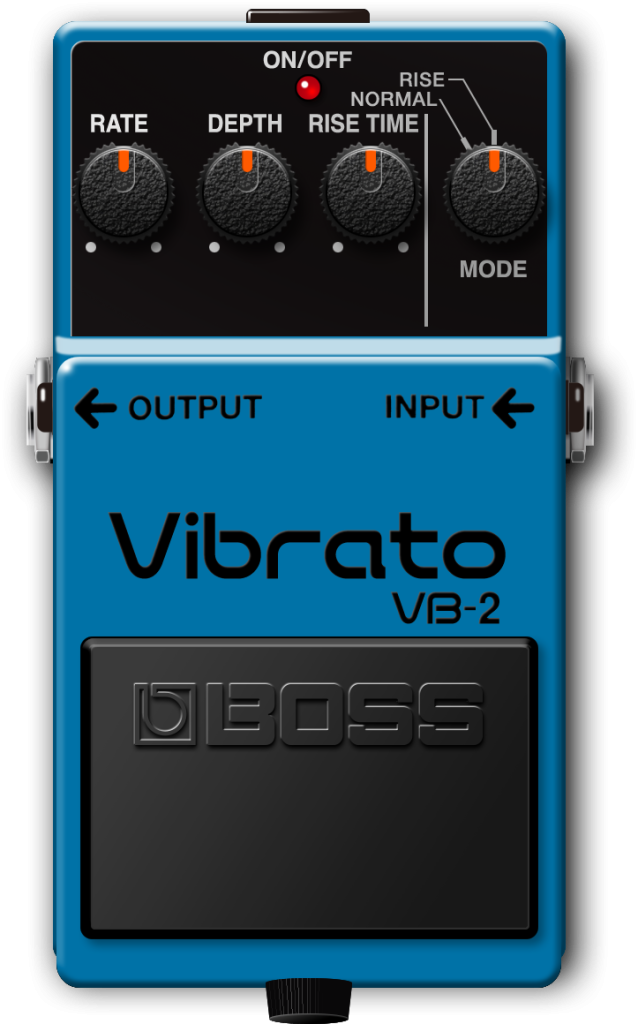
Operation is equally flexible, with standard Latch mode for continuous vibrato, and the brilliantly intuitive Unlatch mode, where the effect is active only while the pedal is pressed—perfect for momentary flourishes. Even with a tremolo arm, it’s hard to replicate the VB-2’s idiosyncratic movement.
Though it was quietly discontinued after just four years, the VB-2’s timeless charms have since elevated it to collectible status. It is now highly prized on the used market and has inspired a Waza Craft equivalent, the VB-2W Vibrato.
DD-2 Digital Delay
When BOSS unveiled the DD-2 Digital Delay in 1983, it was nothing short of a revelation: the world’s first compact digital delay pedal. At a time when digital delays were strictly the domain of bulky rack units, this unassuming stompbox rewrote the rulebook, condensing studio-grade delay power into a pedalboard-friendly format.
At the DD-2’s heart was a dedicated delay chip originating from the acclaimed Roland SDE-3000 Digital Delay rack unit, shoehorned into a compact series case with no room to spare. The circuit itself was a clever hybrid of analog and digital. An important analog component—the compander—softened the attack of feedback sounds, giving the delay a smooth, musical character.
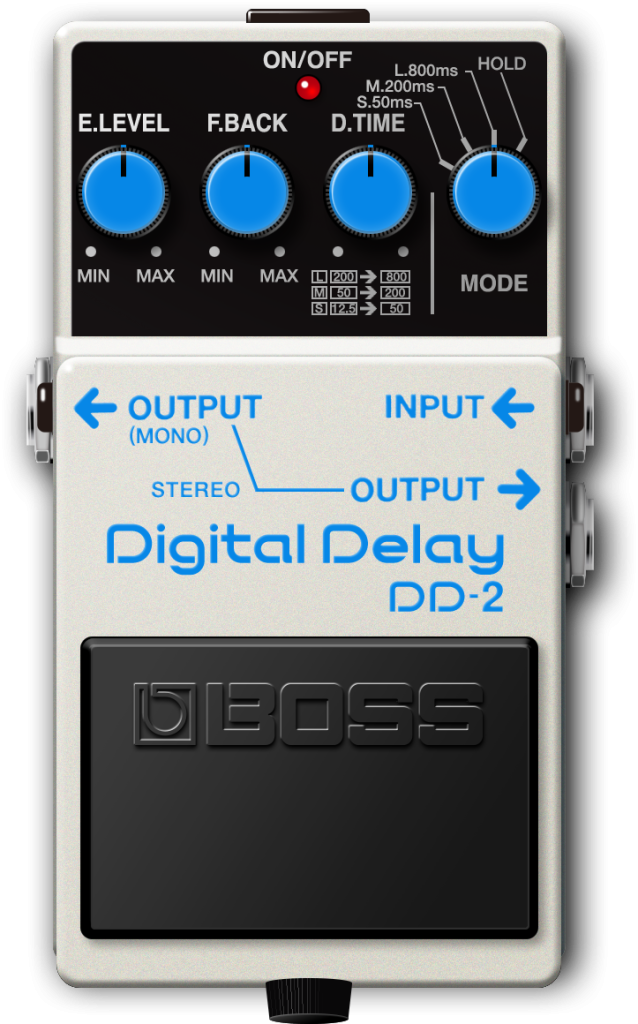
The DD-2’s 12-bit resolution lent warmth and musicality that sat beautifully in a mix, while its impressive delay range—12.5ms to 800ms—far outstripped what regular analog designs could manage. Stereo outputs, a versatile Hold function, and a narrower “vintage digital” frequency response of 40Hz to 7kHz added to its distinctive charm.
The DD-2 can be pushed into a distinctive-sounding musical oscillation when the Feedback knob is turned up, further expanding its dynamic performance options. Meanwhile, adjusting Delay Time on the fly introduces expressive pitch-shifting modulation. More than four decades since its monumental arrival, pro guitarists worldwide still enjoy the DD-2’s hybrid analog-digital sound and expressive tone.
DF-2 SUPER Feedbacker & Distortion
Produced from 1984 to 1994, the DF-2 Super Feedbacker & Distortion remains one of BOSS’s most innovative creations. On the surface, it’s a high-gain distortion box with a smoother attack than the DS-1, churning out big-amp saturation even through a modest practice combo.
But its party trick is hidden in plain sight: press and hold the footswitch, and the DF-2 summons harmonically rich, sustained “feedback” at any volume, without the need to face your amp or crank it to painful levels.
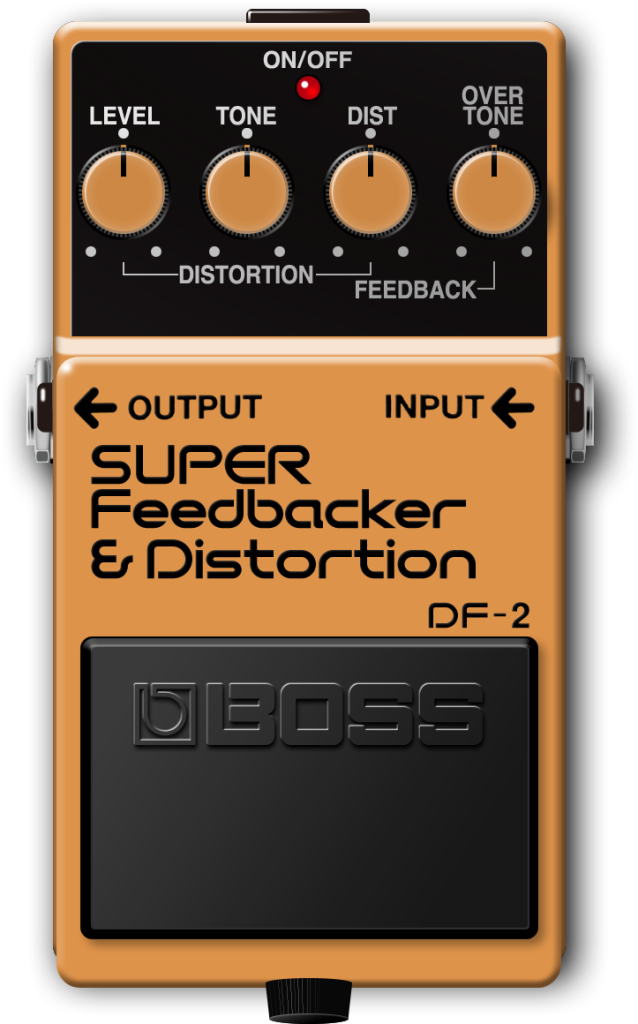
This simulated feedback, shaped by the Overtone control, can shift into octave-up territory for screaming lead lines or eerie swells. The two-mode pedal switch lets you toggle between distortion and feedback in a heartbeat, making it a surprisingly expressive live tool.
Built around a PLL (Phase Lock Loop) IC borrowed from synthesizers, the DF-2 delivered on players’ wishes for controllable feedback—an inspired fusion of desirable amp howl and electronic ingenuity.
PS-2 Digital Pitch Shifter/Delay
When it arrived in 1987, the PS-2 Digital Pitch Shifter/Delay broke new ground as the world’s first compact pedal capable of real-time pitch shifting. Produced until 1994, it became a cult favorite, celebrated for its distinctive vintage-digital character.
The PS-2’s six-position Mode switch offered three pitch shift settings and three delay ranges, from thickening slapbacks to expansive two-second echoes. This made it equally capable of adding tonal depth or creating vivid atmospherics.
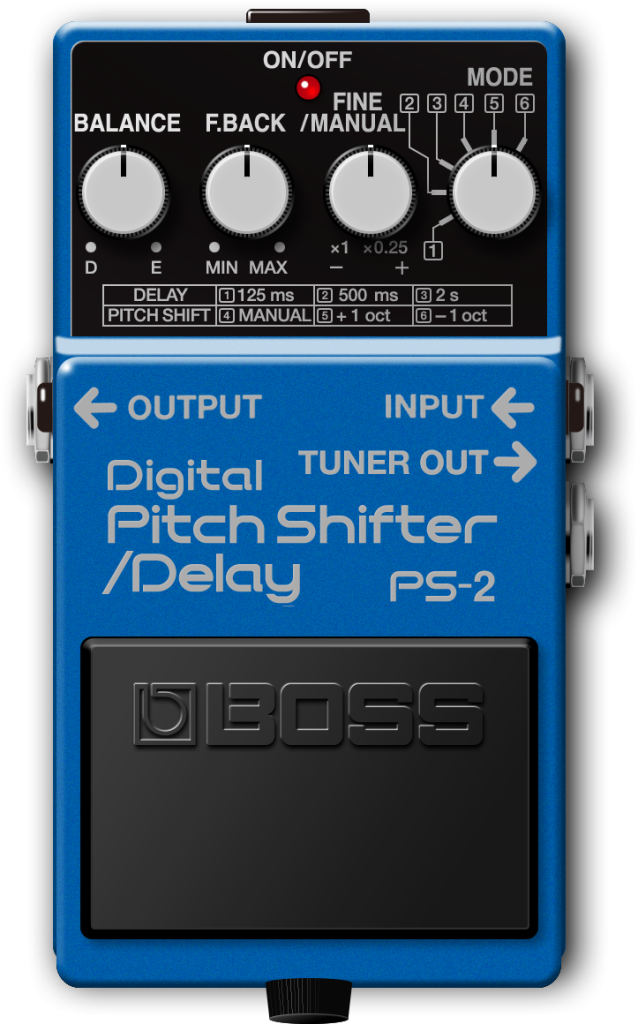
The PS-2 used the same analog compander found in the DD-2, softening the attack of feedback and adding warmth. Meanwhile, its 8-bit digital circuit gave the sound an interesting low-res character. This combination created a cool retro tone that stands apart from today’s ultra-clean digital pedals.
In pitch shift mode, subtle glitching injects movement and unpredictability into your sound, something absent from modern products. Coupled with Balance and Feedback controls for creative layering and regeneration, the PS-2 delivers a unique palette of textures, from nuanced dimension to bold, experimental effects.
PN-2 Tremolo/Pan
Introduced in 1990 and discontinued in 1995, the PN-2 Tremolo/Pan endures as one of BOSS’s most desirable compact pedals. Its dual personality offers both tight, precise tremolo and dramatic stereo panning, making it as useful in the studio as it is on stage.
Players can choose between triangle and square waveforms, tailoring the effect from smooth, undulating sweeps to abrupt, gated chops. In Tremolo mode, the PN-2 supplied amplitude modulation with a distinctly cleaner edge than many amp-style circuits. Meanwhile, Pan mode sends your signal drifting or snapping between the left and right channels—a dramatic, room-filling sound impossible to achieve with regular tremolos.
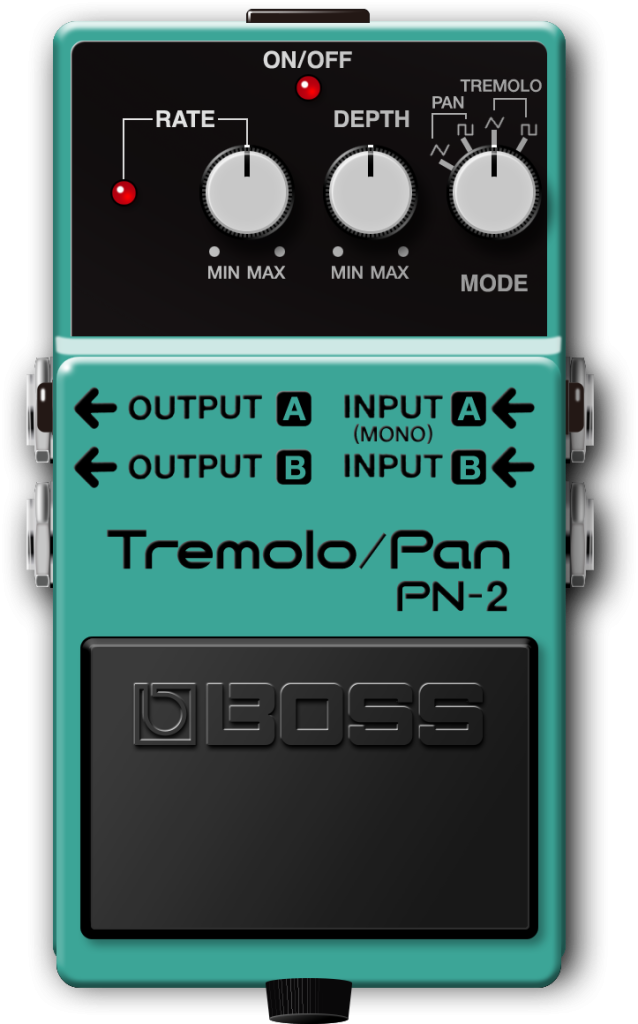
With full stereo I/O, the PN-2 can bring movement and width to mono instruments or enhance stereo sources like keyboards. The onboard Rate LED keeps time with your chosen speed, while dedicated controls for Rate, Depth, and Mode selection encourage experimentation.
Deceptively simple yet endlessly inspiring, it’s no wonder this short-lived gem has become a favorite among collectors and sonic explorers.





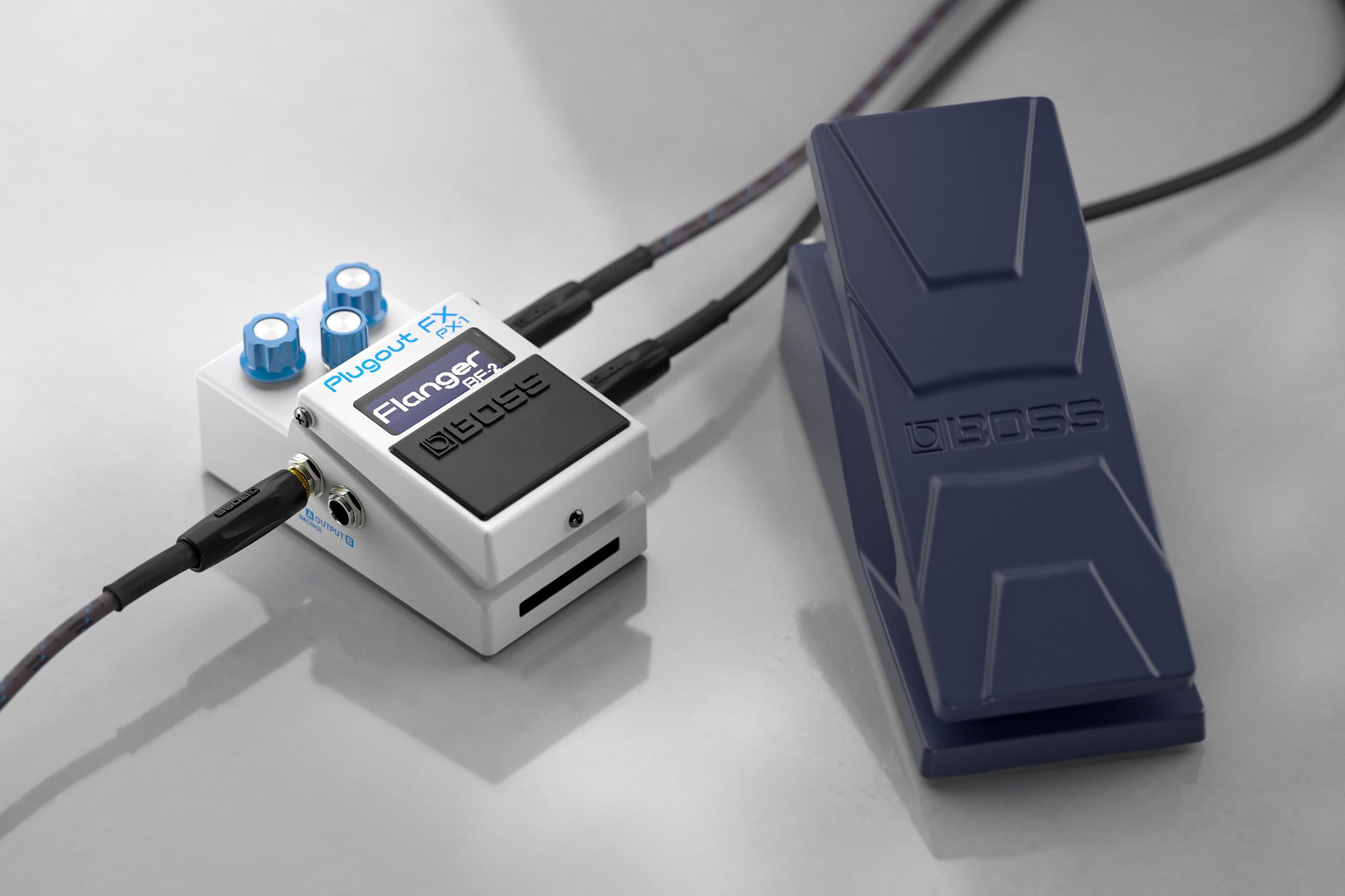
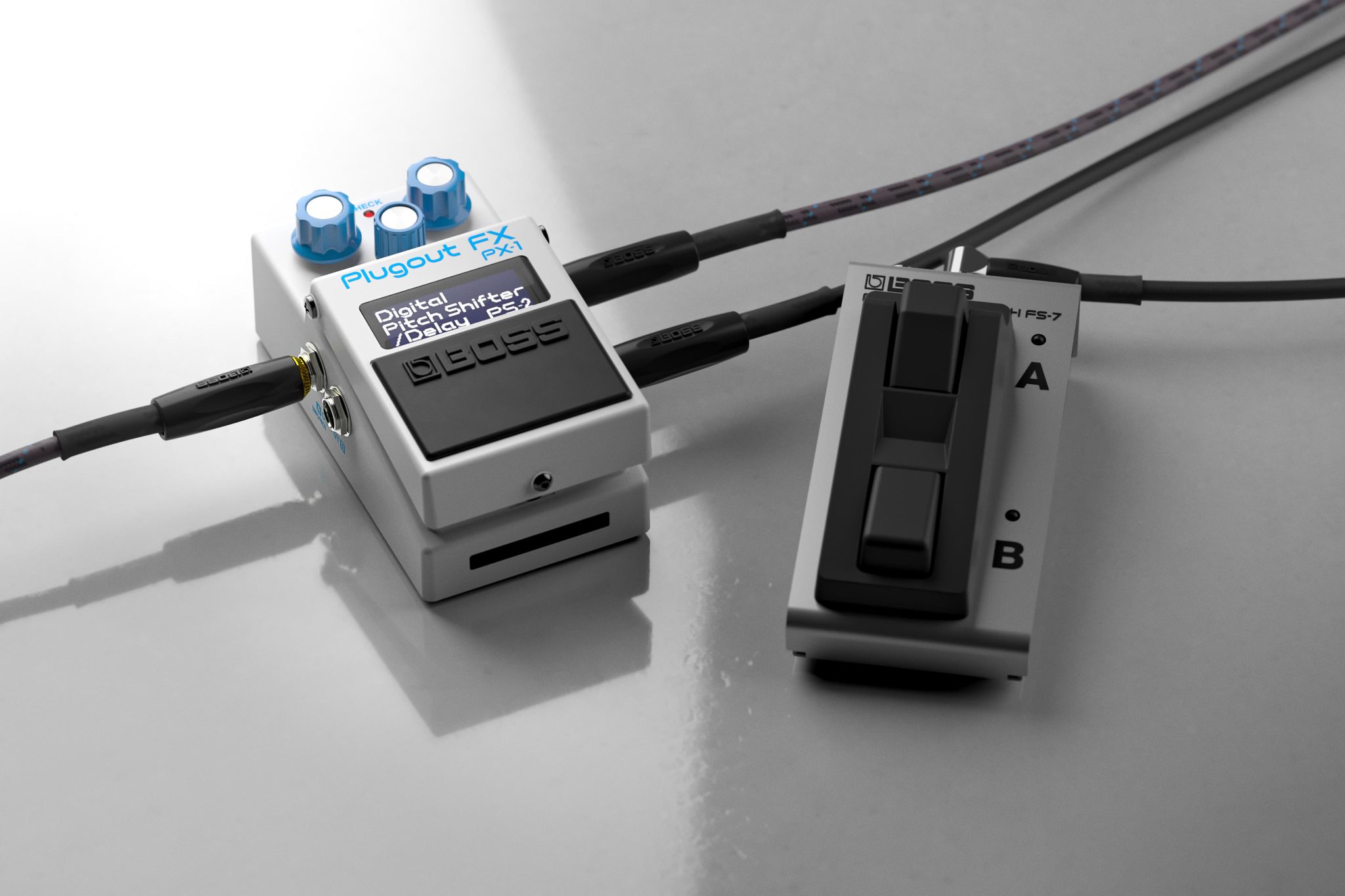

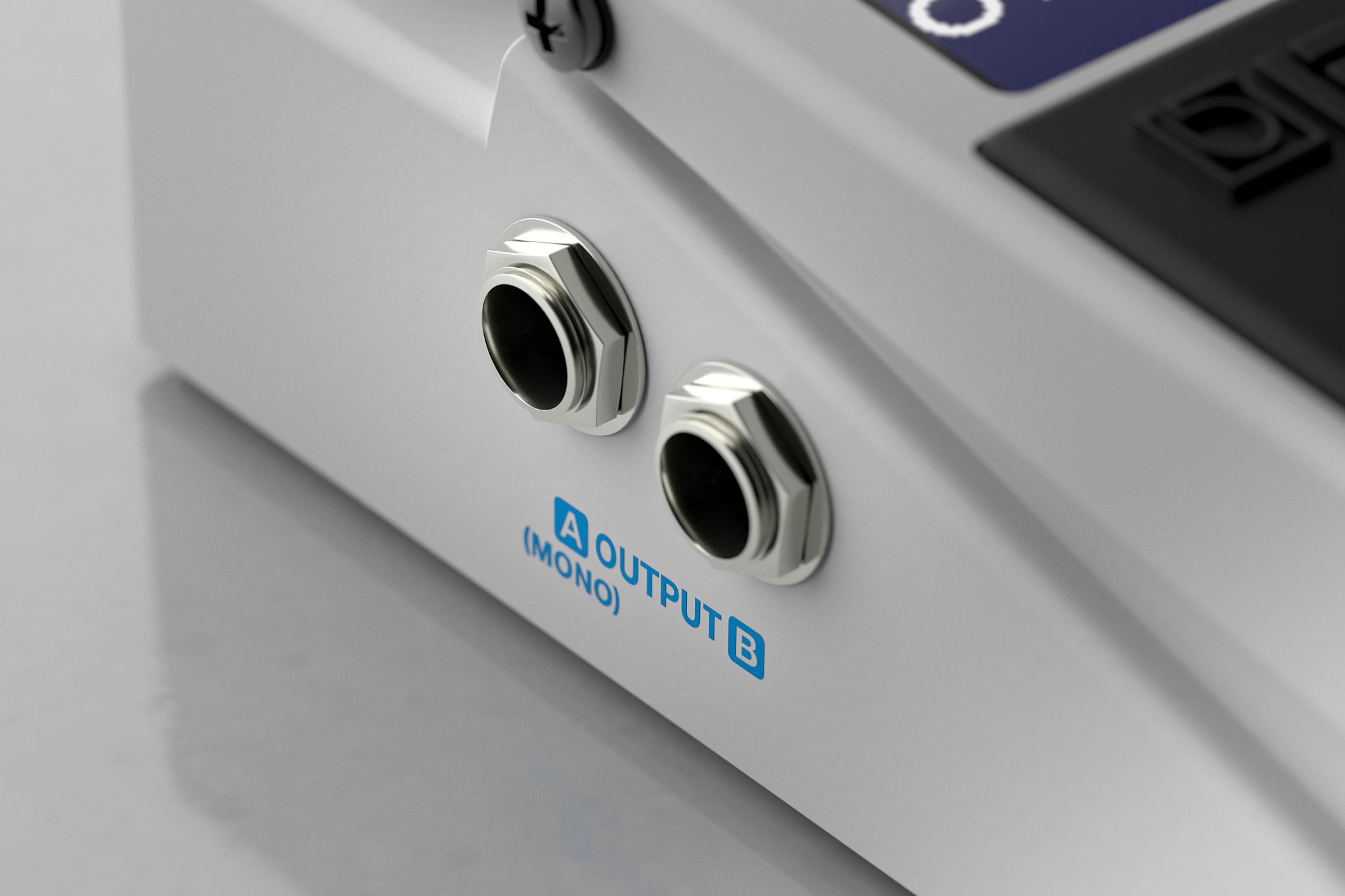

Timeless Tone, Modern Workflow
So, are you ready to plug into a new wave of inspiration? The PX-1 and BOSS Effects Pedals plug-ins breathe new life into these iconic stompboxes, faithfully recreated for musicians of all types.
Each model is meticulously crafted from the circuit level up, capturing the same tone and nuance that made the original so coveted.
These 16 timeless BOSS effects are ready to use with the PX-1 compact pedal and the BOSS Effects Pedals plug-in suite included with Roland Cloud Ultimate Membership.
And this is just the beginning—many more effects are coming. PX-1 users can add new models by purchasing individual Model Passes. For Roland Cloud Ultimate members, newly added BOSS Effects Pedals plug-ins will be available automatically at no extra cost.
With an expanding lineup of exciting BOSS effects at your command, you’re free to explore, push boundaries, and leave your own mark on the BOSS legacy.

